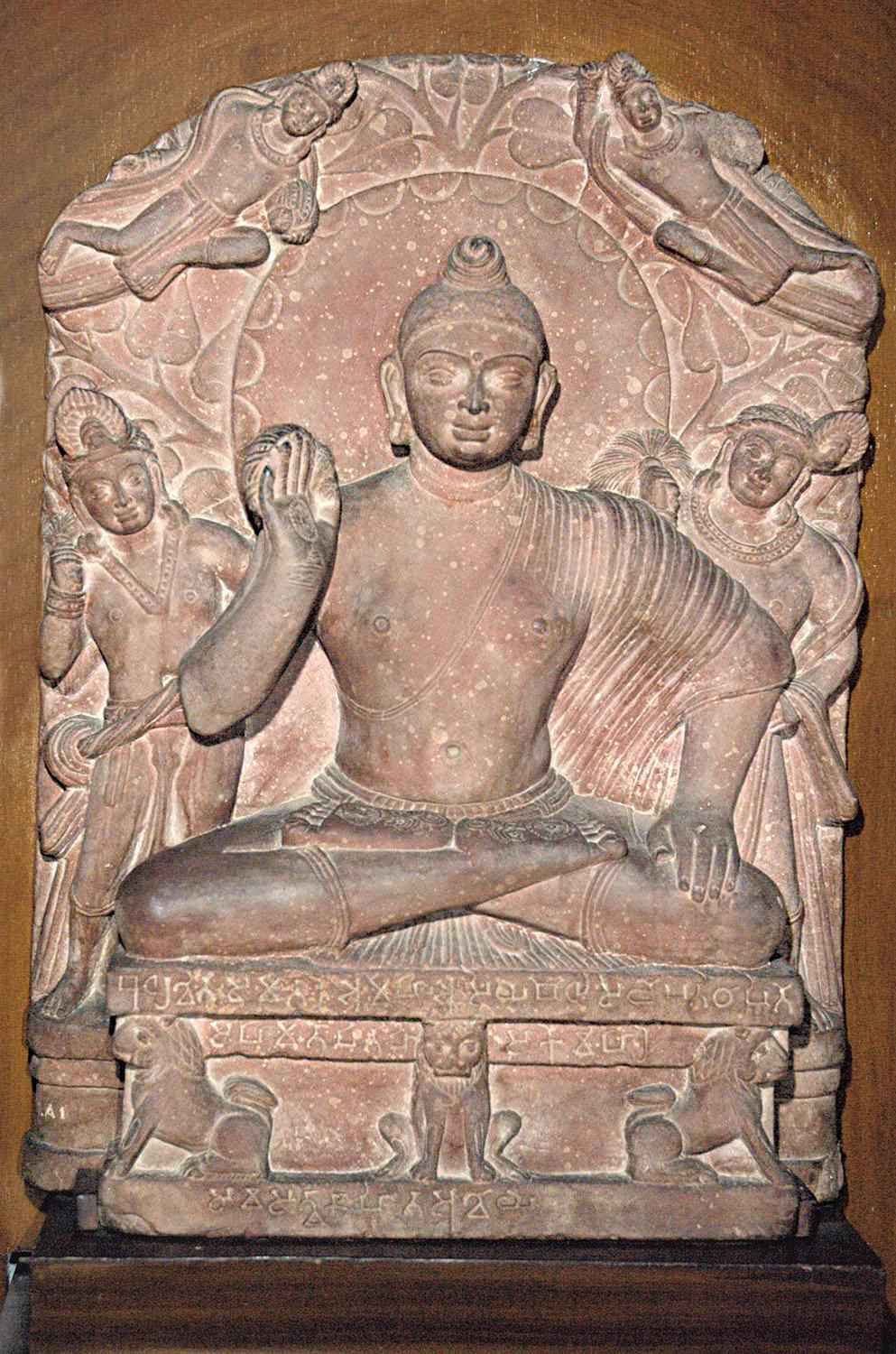Mathura was one of the most ancient places of India. It was noted for the holy legends associated with its name.
It was also a sacred place for the followers of Jainism. From earlier times, the architects and sculptors of that place earned fame for artistic works on stones.
During the post-Mauryan era, they constructed smaller statues, pillars and railings to form parts of the stupas which were being built at different places.

Image Source: s3.amazonaws.com/classconnection/447/flashcards/5932447/jpg/buddha_and_attendants_mathura-141dd2527081fb1583a-1491ABD9175593239F8.jpg
ADVERTISEMENTS:
The artists of Mathura became experts in carving stone figures of Yakshas, trees, human bodies and imaginary animals. It is believed that the Mathura art provided models for future images of Brahmanical deities and Jaina Tirthankaras.
The rise of Mahayana system of Buddhism during the Kushana rule provided golden opportunity to the Mathura artists to show their talent in creation of Buddhist images and icons. In that work they did not need foreign influence like the Gandhara artists. The Mathura school of art developed on Indian traditions.
Instead of looking at Greek sculptures for inspiration, the Mathura sculptors developed their own distinct style of work. They found enough material from Buddhist Jataka storeis, from the life-events of Gautama Buddha, from his divine birth, renunciation, enlightenment, sermons at many places, and his Mahaparinirvana.
Since Mathura was within the Kushana Empire, the scupltors who were known as the Salia-Rupakaras received enough of royal patronage. They met the royal demand and requirement of outside countries by carving countless images of Buddha. Those images presented divine attributes of the Lord in various mudras like the famous Abhaya-Mudra of Buddha. Bodhisattva images also received Indian traditional faith as expected of divinities.
ADVERTISEMENTS:
The Gandhara school of Art did not stop only with Buddhist images. From traditional Brahmanical faith, the artists carved out images of Kubera, and of Yakshas, Yakshinis and Nagas. Side by side, they also carved out Brahmanical and Jaina divinities. They also constructed stone railings, female figures and decorative stone panels with floral designs.
Besides religious sculptures, the Gandhara School of Art carved secular statues according to need. The finest example of this art is seen in the life-size statue of Kushana Emperor Kanishka. The King stands in royal posture with majestic dignity. His robes were typical of the Kushana era. The legacy of the Mathura art reached its culminating height during the Gupta Era which saw a puranic religious revival.